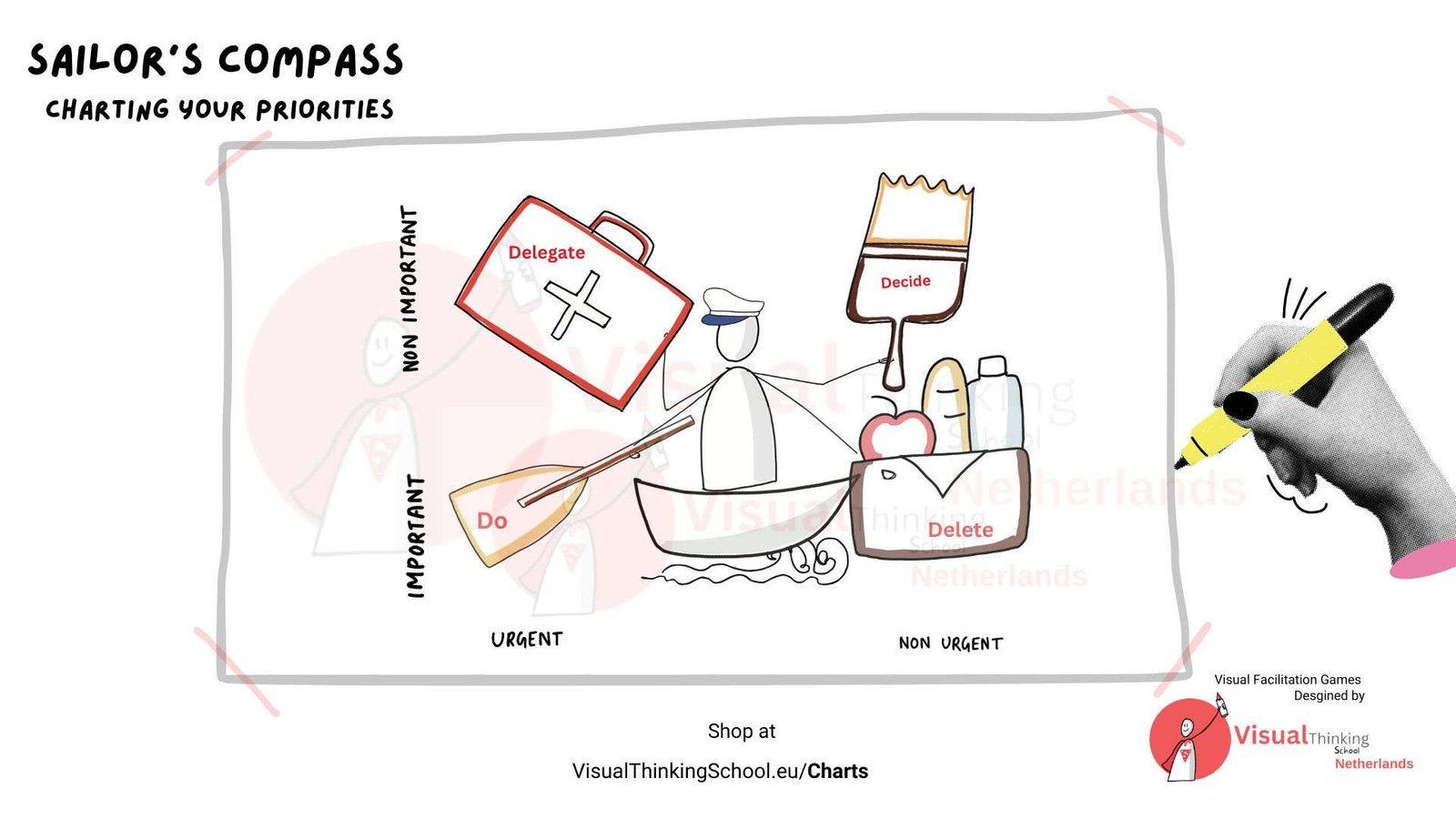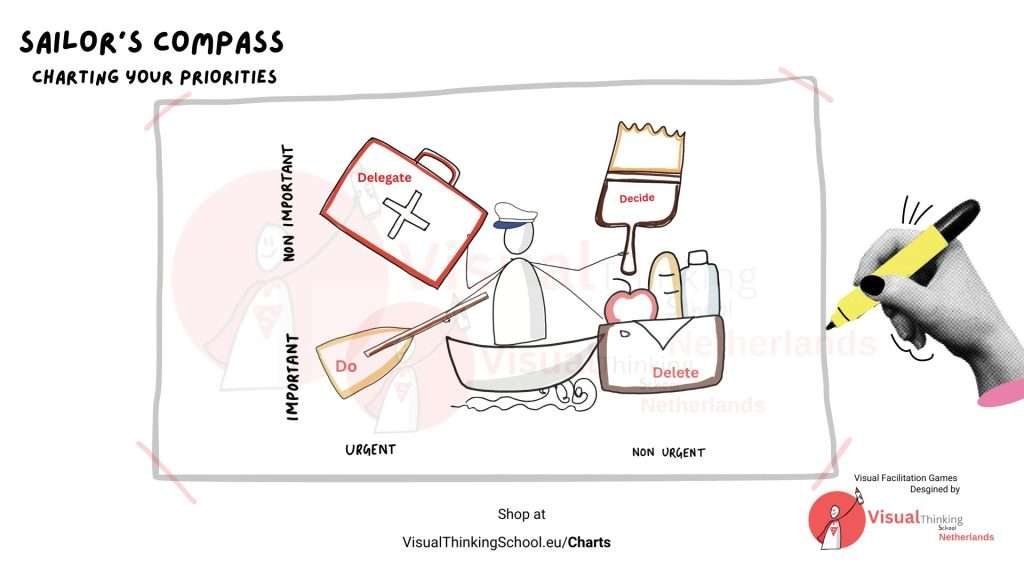
A facilitation game to chart your priorities
The Sailor’s Priority Compass game provides a creative approach for teams to evaluate tasks and organize them based on urgency and importance. By utilizing four nautical metaphors—Delegate (urgent but less important), Decide (important but less urgent), Do (both urgent and important), and Delete (neither urgent nor important)—teams can classify their tasks efficiently. The visual compass, featuring a sailor, painting brush, sailing icon, and grocery shopping icon, helps participants see where to focus their efforts, delegate responsibility, or eliminate distractions.

Use The Sailor’s Priority Compass when:
This game play is excellent for goal-setting, resource allocation, and any situation where time management and priority setting are crucial.
You can purchase facilitation charts for this game at Visual Thinking School Charts.
Objective: Generate a list of tasks or ideas relevant to the current project or discussion.
Game Mechanics:
This phase ensures that each team member’s perspective is included and that a wide variety of tasks is documented.
Objective: Place tasks on the Priority Compass based on urgency and importance.
Game Mechanics:
For a helpful guide on task prioritization frameworks like this, see this time management.
Objective: Identify top-priority tasks in each quadrant.
Game Mechanics:
This phase provides a visual cue of the team’s consensus, making it easy to see which tasks stand out as essential actions.
Objective: Develop an action plan for each top-priority task.
Game Mechanics:
Document the action steps on a flipchart or board to ensure accountability and follow-through.
Reflect on how the priorities were allocated and if the metaphors helped simplify decision-making. Discuss any surprises, and take note of any insights to guide future tasks.
The Sailor’s Priority Compass is a unique approach to organizing and aligning tasks, using a nautical metaphor that’s both fun and functional. By visually separating tasks into delegate, decide, do, and delete, teams can focus on what’s most important, delegate smartly, and let go of non-essentials. For more visual facilitation techniques and methods, consider exploring our Visual Facilitation Certification Course at Visual Thinking School Courses. To get your own facilitation charts and make your sessions even more engaging, visit Visual Thinking School Charts.

Piyuesh is the founder of Visual Thinking School, Netherlands. He is passionate about empowering organizations and classrooms with Visual Thinking Skills. He conducts trainings onBusiness Sketchnotes™ , Classroom Sketchnotes™, Visual Business Storytelling™, Graphic Facilitation™
In his free time, piyuesh likes practicing Aerial Yoga, Acro yoga, Krav Maga and Pole workouts.